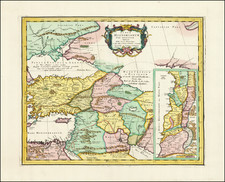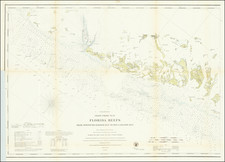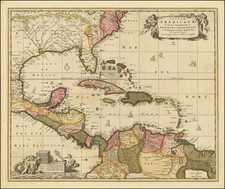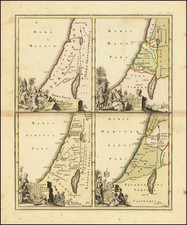Noah's Ark After The Flood -- The Procession of Animals
Noah's Ark with a procession of animals departing the ark. The image shows elephants, camels, horses, and more exiting the ark while Noah and his sons light a fire and build houses, with a rainbow in the distance.
This work was originally produced by Theodore de Bry in his important travel book the Grands Voyages.
This image accompanied the Latin text that follows which seems to suggest that it is here to illustrate how the inhabitants of Florida and Virginia descended from Ham. It was common for De Bry to use generic images to accompany some of his text so he could reuse the same woodblock several times.
Do not think, good reader, of Virginia, which we made a few months ago; although, to confess the truth, this circumstance also greatly affects the minds; but rather, as you observe the immense and wonderful works of God, let us give thanks to him for the kindness he received, that he deigned to reveal himself to us, and teach us the way of salvation, when we observe these wretched Florida The inhabitants of the neighboring Provinces (who, however, undoubtedly originated from one of the sons of Noah, but from Ham, as it is credible, than from any of the rest), were ignorant of the knowledge of God. Otherwise, of course, they were presented with an elegant symmetry of body, great, robust, daring, agile, yet supremely stubborn and insidious. They have a lurid and dirty color, which, after anointing the body with a certain oil, they contract with the heat of the sun;
Theodor de Bry (1528-1598) was a prominent Flemish engraver and publisher best known for his engravings of the New World. Born in Liege, de Bry hailed from the portion of Flanders then controlled by Spain. The de Brys were a family of jewelers and engravers, and young Theodor was trained in those artisanal trades.
As a Lutheran, however, his life and livelihood were threatened when the Spanish Inquisition cracked down on non-Catholics. De Bry was banished and his goods seized in 1570. He fled to Strasbourg, where he studied under the Huguenot engraver Etienne Delaune. He also traveled to Antwerp, London, and Frankfurt, where he settled with his family.
In 1590, de Bry began to publish his Les Grands Voyages, which would eventually stretch to thirty volumes released by de Bry and his two sons. The volumes contained not only important engraved images of the New World, the first many had seen of the geographic novelties, but also several important maps. He also published a collection focused on India Orientalis. Les Grands Voyages was published in German, Latin, French, and English, extending de Bry’s fame and his view of the New World.










![[ Gulf Coast & West Coast of Florida ] De Cust van Westindien Van La Desconoscida, tot C. Escondido. . .](https://storage.googleapis.com/raremaps/img/small/65741.jpg)



![[ Mount of Olives ] Afbeelding Van Den Olyfberg. Volgens de hedendaagsche Reizigers](https://storage.googleapis.com/raremaps/img/small/101645.jpg)